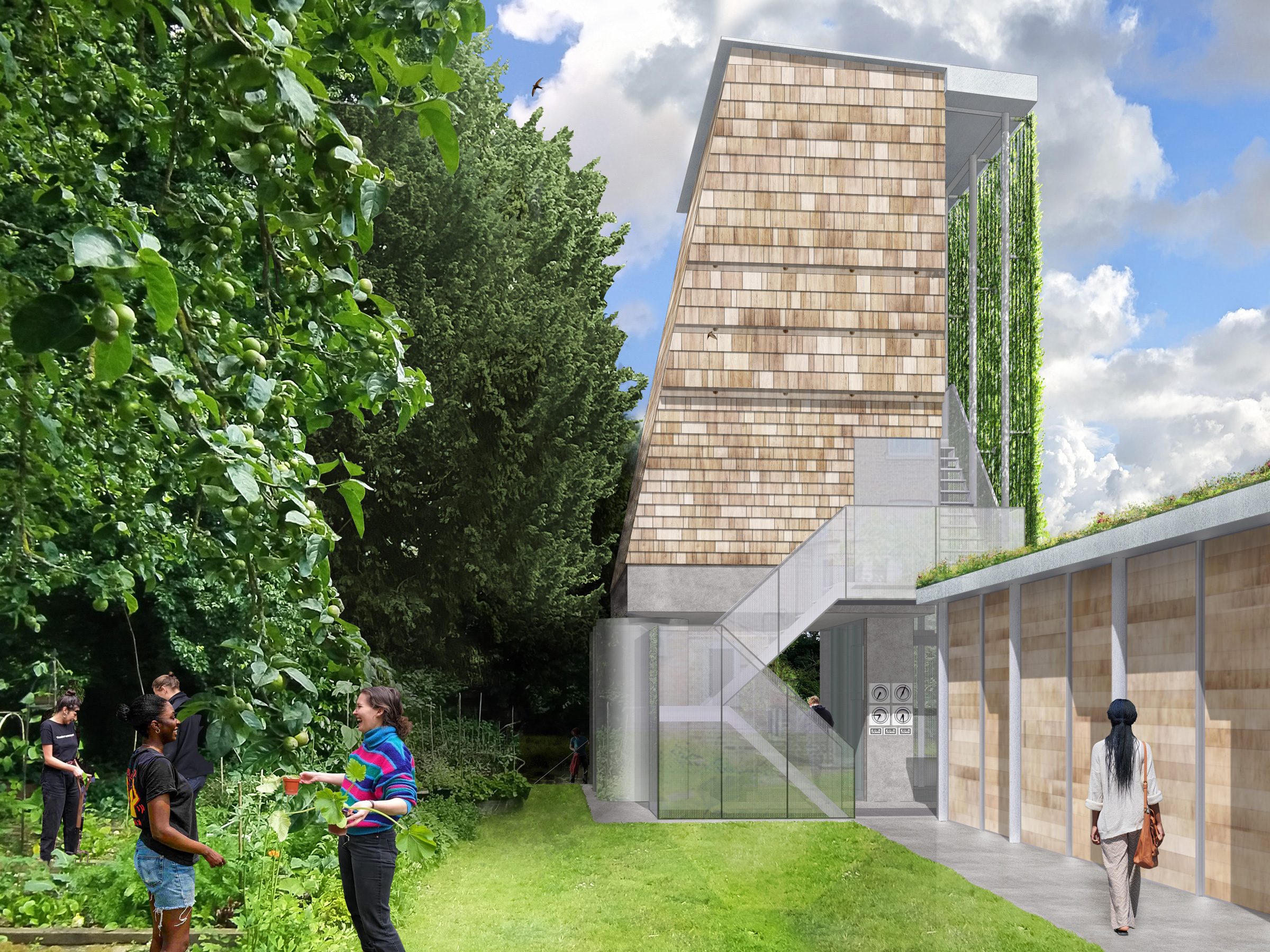
Darwin College, Cambridge, has received unanimous support from Cambridge City Council’s planning committee for a programme of building and development to support the College’s goals of achieving carbon neutrality over the next decade. The plans bring together two separate but connected bodies of design work developed by 5th Studio Architects and Caruso St John Architects, to take advantage of the College’s riverside location to harness innovative river-source heat pump technology, and to create much-needed new social spaces for the College community.
The Pump House
5th Studio have designed a Pump House, next to the River Cam, which will house the technology required to harvest heat from the river to provide low-carbon heating and hot water for the College’s central Cambridge estate. A network of pipes will distribute heat to individual buildings, in the first river-source heat pump network at this scale planned for central Cambridge.
The Pump House will accommodate the necessary equipment, including heat pumps, circulation pumps, filtration equipment, thermal stores, expansion equipment and ancillaries to form a fully operational central heating system. 5th Studio’s design promises to create a sympathetic addition to the College site, which celebrates its innovation, raises the profile of sustainable solutions
The Pump House joins a family of idiosyncratic historic industrial buildings, including water mills and granaries, in what was once a busy working environment powered by the river. Its form and material quality are shaped by its relationship to the river and the space it needs to draw energy from it. The Pump House foregrounds its sustainable technology and being visible from the Mill Pond, a public space in the heart of the city, offers opportunity for engagement with the public as well as Darwin College’s community.
Building refurbishment
A switch to sustainable energy sources is only feasible if the existing building fabric is first improved to limit heat loss as much as possible. 5th Studio and Caruso St John between them will therefore oversee refurbishment measures across the site, to support its decarbonisation. These measures principally comprise improved glazing and insulation, sensitively incorporated into the historic fabric. Simultaneously Caruso St John have designed a new social space beneath Howell Killick, Partridge and Amis’ 1966Dining Hall – the Garden Room – which also forms part of the planning application.